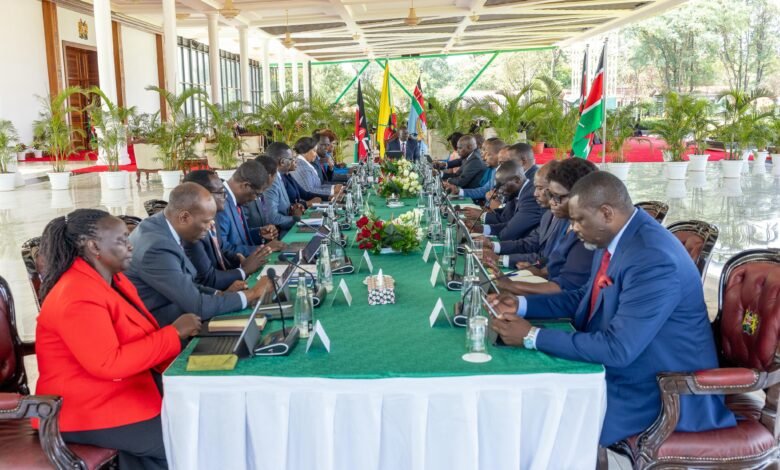
The Cabinet has approved the 2025 Finance Bill, a key instrument in mobilizing revenue for the national budget, while signaling that the initial Ksh.4.3 trillion budget estimate will undergo “substantial revisions” before it is presented to Parliament.
The Bill is part of ongoing fiscal realignment efforts aimed at narrowing the fiscal deficit to 4.5% of GDP in the 2025/26 financial year—down from 5.1% in 2024/25 and 5.3% in 2023/24.
In a statement released following the Cabinet meeting, the government said this year’s Bill will minimize new tax measures, focusing instead on closing revenue leakages and enhancing tax administration efficiency.
Key priorities in the Bill would include tackling fraudulent tax refund claims and other loopholes that have historically drained public finances.
To improve revenue collection and reduce tax disputes, the Bill proposes targeted amendments to several key laws, including the Income Tax Act, VAT Act, Excise Duty Act, and the Tax Procedures Act.
These reforms aim to streamline tax refunds, seal legal gaps that delay revenue inflows, and promote timely compliance.
Also Read: How Finance Bill 2024 Cost Kenya Ksh.131 Billion Funding from IMF
Small businesses stand to benefit from a new provision allowing full deductions of everyday tools and equipment in the year of purchase, eliminating bureaucratic delays in accessing tax relief.
Retirees will also enjoy expanded reliefs, with the Bill proposing that all gratuity payments—whether from public or private pension schemes—become fully tax-exempt, securing greater financial dignity in retirement.
Employers, under the new proposals, will be mandated to automatically apply all eligible tax reliefs when calculating Pay As You Earn (PAYE) for employees. This move addresses a longstanding concern where employers often omit such reliefs, forcing workers to seek refunds directly from the Kenya Revenue Authority (KRA).
While the government did not disclose the extent of anticipated expenditure cuts, it noted that the final budget will be guided by the need to reduce the fiscal deficit to 2.7% of GDP in the medium term without overburdening taxpayers.
“These reforms are part of a broader austerity agenda aimed at strengthening fiscal discipline, reducing public debt vulnerabilities, and creating the fiscal space needed to deliver essential public services,” the Cabinet said.






Some truly superb information, Gladiola I found this. “I try to avoid looking forward or backward, and try to keep looking upward.” by Charlotte Bronte.
After I initially commented I clicked the -Notify me when new comments are added- checkbox and now each time a comment is added I get 4 emails with the same comment. Is there any manner you can remove me from that service? Thanks!
It’s hard to find knowledgeable people on this topic, but you sound like you know what you’re talking about! Thanks
I have been browsing online greater than 3 hours today, yet I never discovered any fascinating article like yours. It is lovely worth enough for me. In my view, if all web owners and bloggers made excellent content material as you probably did, the web will be much more helpful than ever before.
Some really interesting info , well written and loosely user friendly.
I’ll immediately clutch your rss feed as I can’t to find your e-mail subscription link or e-newsletter service. Do you’ve any? Kindly let me recognise so that I could subscribe. Thanks.
I went over this site and I think you have a lot of wonderful info, saved to favorites (:.
Thank you for the auspicious writeup. It in fact was a amusement account it. Look advanced to more added agreeable from you! However, how could we communicate?
so much great information on here, : D.
Excellent items from you, man. I’ve understawnd
your stuff prior to and you’re simply too wonderful.
I actually like what you’ve received here, really like what you’re stating andd the way through which you say it.
You make it entertaining and you still care for to
stay it sensible. I can’t wait to learn much more from you.
This is really a tremendous website. https://investsolutions.Org.uk/employer/22bit-22bit-casino36/
you will have an excellent weblog here! would you wish to make some invite posts on my weblog?